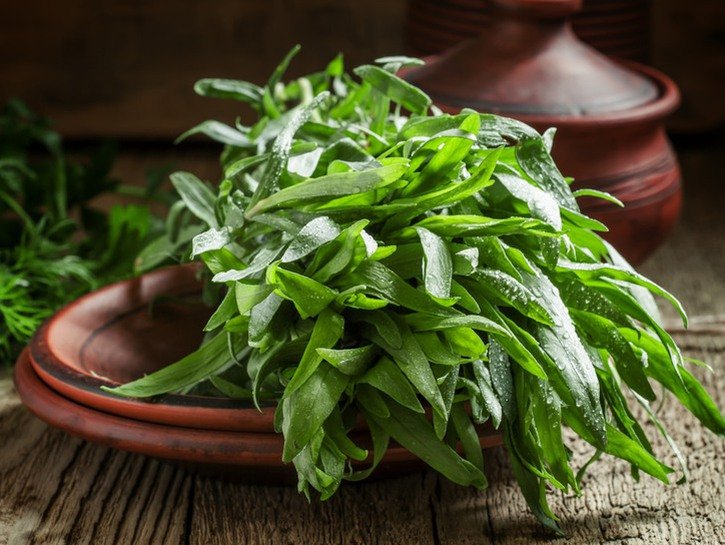What Is Tarragon?
You’ve probably seen tarragon while skimming through the spice aisle or you may even have it at home, but what exactly is it? Coming from the sunflower family, the herb has a bittersweet taste and an anise-like aroma. Tarragon is typically used as a flavoring for vinegar as well as other tangy items like pickles, relishes, prepared mustards, and sauces. Tarragon also pairs well with fish, meat, soups, and stews.
History Of Tarragon
Though tarragon is native to southern Russia and western Asia, it is primarily produced in France. Unlike other herbs, tarragon was not used by ancient peoples and has only recently been used for natural medicinal purposes. Tarragon wasn’t really used until the 16th century in England and wasn’t brought to the United States until the early 19th century. Now, people all over the world use Tarragon as both a spice and a medicinal herb, though there is insufficient evidence for its effectiveness.
Is Tarragon Safe To Eat?
Tarragon is perfectly safe to eat if you’re using it as a spice in a dish. However, it is likely unsafe for pregnant women to consume as it might make them start their period or endanger their pregnancy.
The safety of using Tarragon, medicinally, is up for debate because there is not enough evidence to prove that it actually works as an ailment. However, you shouldn’t use tarragon as a medicine long-term in high doses because it contains a chemical called estragole, which is believed to cause cancer.

Tarragon Health Benefits
Just because tarragon should be used mainly as a spice and not as an herbal medicine, it does not mean that it doesn’t have any health benefits. Tarragon is low in calories and carbohydrates – just one tablespoon contains only 5 calories and 1g of carbohydrates. Tarragon is also contains manganese, iron, and potassium, which may benefit your overall health.
Tarragon And Brain Health
As a good source of manganese, tarragon can have good impact on your brain health. Manganese protects the brain from damage caused by free radicals and helps it improve its cognitive function.
Tarragon And Cell Function
Because tarragon is good source of iron, it helps keep the body’s cells functioning. Iron also helps with blood production and prevent an iron deficiency, which can lead to anemia and fatigue.
Tarragon And Low Blood Pressure
Tarragon can play a role in keeping your blood pressure low because it contains potassium, which helps with heart, muscle, and nerve function.

Recipes, Substitutes, And Storage
Because of its distinct flavor, a lot of recipes often call for the use of tarragon. You can buy tarragon either fresh or dried. However, it’s important to note that dried tarragon has a much stronger flavor, so be sure not to go overboard with it. A simple rule to remember is that 1 tablespoon of tarragon equals 1 teaspoon of dried tarragon.
Popular Recipes
The French don’t consider tarragon the “king of herbs” for nothing. Expand your cooking prowess by trying out these tarragon-forward recipes. If you’re not so sure about using it, try sprinkling a bit on top of a baked potato or eggs to get acquainted with the flavor.
- French Tarragon Chicken
- Roasted Potatoes with Green Onions and Tarragon
- Roasted Salmon with Mustard and Tarragon
- Béarnaise Sauce
- Parisienne Gnocchi with Bacon and Tarragon
Tarragon Substitutes
If you can’t find tarragon at your local grocer or you run out, your best bet would be to substitute it with chervil or a pinch of fennel or anise seeds. You can also try marjoram, oregano, rosemary, dill, or basil if you don’t like tarragon’s licorice-like flavor.
How To Store Tarragon
If you buy tarragon fresh, the best way to store it is by freezing whole sprigs in an airtight bag – just make sure to use it within a three to five month window. Dried tarragon should be stored in cool, dry place and be used within a year to get the most out its flavor.
